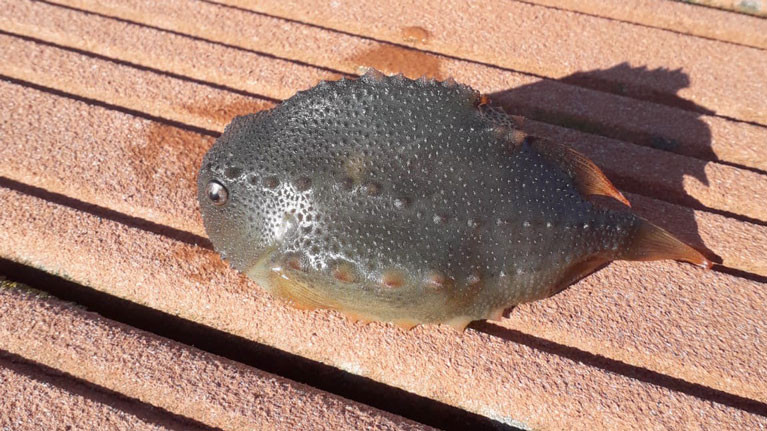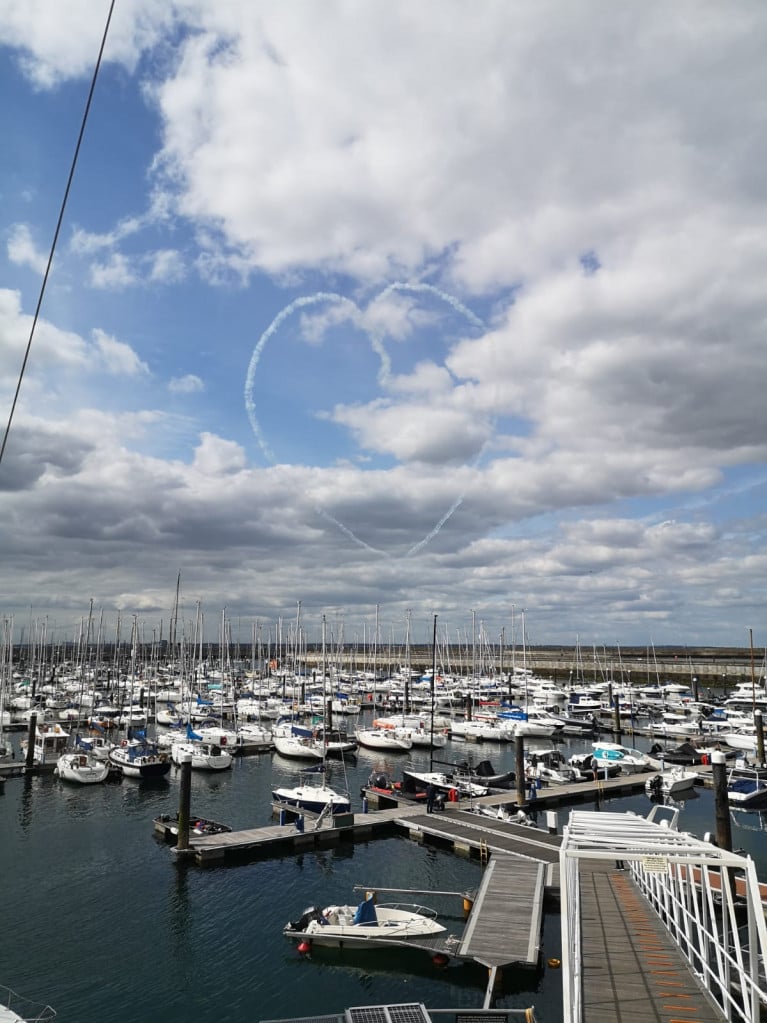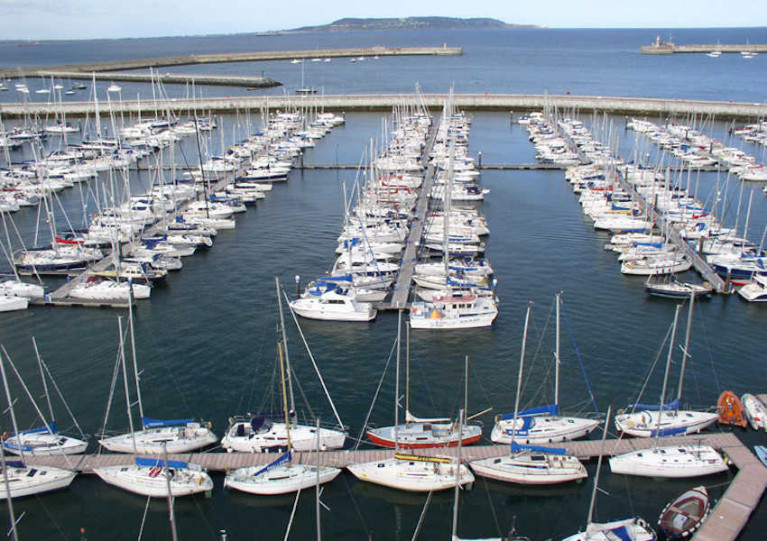Displaying items by tag: Dun Laoghaire Marina
Marina Says Berth Holders Face Further Reduction in Car Parking Space Under BusConnects Plans for Dun Laoghaire’s Harbour Road
Plans for additional bus layover spaces at Dun Laoghaire DART Station have have drawn criticism from the harbour’s 800-plus-berth marina.
In a letter to berth holders, Dun Laoghaire Marina says the proposed change, which would see a number of car parking spots on Harbour Road re-designated for bus use, “will mean a further loss of car parking within the harbour and one which directly impacts marina visitors”.
The marina company has already made a submission to the Dun Laoghaire Rathdown County Council under the open public consultation “as we are greatly concerned with the 55% reduction in car parking around the marina over the last decade”.
It added: “While we support any additional public transport connections within the harbour (or locally), the continued reduction in car parking spaces which serve an 820-berth marina cannot go unchallenged.”
Full details on the new bus stand layout are available on the DLRCoCo website and submissions are open until to Friday 12 January 2024.
Dun Laoghaire Marina Supervisor Vacancy
Dun Laoghaire Marina on Dublin Bay currently has a vacancy for the position of Marina Supervisor.
This is a full-time position working in an outdoor environment on a four-on-two-off rota pattern.
To summarise the main responsibilities of this position:
- Have enthusiasm for and direct knowledge of boats and boating.
- Be physically fit and well-presented, able to work unsupervised and under pressure in a customer-related industry.
- Familiar with general maintenance projects
- Dispense fuel to boats.
- Complying fully with all regulations relating to Health & Safety, employee conduct, environmental policy, fire precautions and emergency procedures.
The successful applicant will have:
- Excellent customer service skills
- Excellent organisational skills and the ability to work on their own initiative.
- An excellent level of English (both written and oral) is essential
- At least basic computer literacy
- VHF licence and familiarity with the use of VHF procedures
- National Powerboat Certificate (or equivalent)
Above all else, we require a reliable, sensible and professional team member who is willing to commit to our high levels of customer service and help maintain the 5 Gold
Anchor standard of Dun Laoghaire Marina.
This is a permanent position, and successful candidates will receive on-site training and familiarisation prior to commencement.
This is an established position, and if you feel that you can meet the required criteria, please contact (by mail or email):
Mr Paal Janson,
General Manager,
Dun Laoghaire Marina,
Harbour Road,
Dun Laoghaire,
Co. Dublin.
Email: [email protected]
French and Scandinavian yachts are the summer's most popular visitors to Dun Laoghaire Marina as Ireland's marine leisure capital sees a significant increase in visiting yachts since COVID-19 restrictions were lifted.
The visitors included one of the world's biggest 'leisure boats', the Cook Islands-flagged forty-metre Phoenix in May, continuing a pre-COVID trend of superyacht visits to the south Dublin town.
"French yachts, in particular, are arriving in record numbers, as are the Scandinavians", according to the marina's General Manager Paal Janson.
 The brand new 40-metre Italian superyacht Phoenix arrived in Dun Laoghaire Marina in May, one of the first such visitors to Ireland's largest marina this season
The brand new 40-metre Italian superyacht Phoenix arrived in Dun Laoghaire Marina in May, one of the first such visitors to Ireland's largest marina this season
Built in 2001, the Marina on Dublin Bay is industry rated as a 'Five Gold Anchor' marina and is Ireland's largest marina facility, with 800 berths for both local and visiting craft.
French yachts into the harbour have increased by 82%, from 62 in 2019 to 113 this season.
 Dun Laoghaire Marina is a popular destination for international yachting visitors with its local attractions and transport links Photo: Peter Barrow
Dun Laoghaire Marina is a popular destination for international yachting visitors with its local attractions and transport links Photo: Peter Barrow
The early visitor figures – a crucial indicator of Ireland's high-spending marine leisure tourism – also show a drop so far in UK boats, even though, as Janson notes, 'British sailors can avail of Common Travel Area freedoms for hassle-free entry to Ireland'.
UK visits were 219 in 2019 and are 198 to date. There were no Finnish visitors at all in 2019, but four have arrived this summer so far.
 Paal Janson, General Manager of Dun Laoghaire Marina Photo: Afloat
Paal Janson, General Manager of Dun Laoghaire Marina Photo: Afloat
"These visitors stay local and spend in the shops and restaurants of Dun Laoghaire town, adding further importance and value to the local community," he said.

A comparison between 2022 and 2019 visitors (pre and post-covid) reveals some buoyant increases.
What's more, the data for 2019 is over six months while 2022 is over 4.5 months; therefore, the positive figures continue to increase with 1.5 months of the 2022 season left.
Spinal Injuries Ireland and Dun Laoghaire Marina on Dublin Bay have announced the installation of a new Oxford Dipper Hoist to allow wheelchair users to easily access boats.
Wheelchair user, Jenny Needham, is the Administration Manager at the Marina and she welcomes the hoist as “it is bringing accessibility to the harbour”. The marina also has a fully accessible self-contained lavatory and shower which is immediately accessible from the forecourt.
Paal Janson, General Manager of Dun Laoghaire Marina says “promoting and facilitating accessible boating has long been an important cause for Dun Laoghaire Marina. Disability shouldn’t be a barrier to getting out on the water and we are keen to facilitate that ambition. We are pleased to work with Spinal Injuries Ireland to make access for all a reality.”
Spinal Injuries Ireland have a RIB, Niamh, berthed in the marina and this is a popular element of their Let’s Go Activity Programme. People who have suffered a spinal cord injury can take a trip up the Liffey with family or friends and maybe a spin around Dalkey Island, weather and tide permitting, before enjoying tasty fish and chips from the East Pier. This type of experience can show someone who has experienced such a life-changing injury that there is fun to be had and give them confidence to take on new challenges and set new goals.
Fiona Bolger, CEO of SII, states “SII’s powerboat trips in Dublin Bay are one of our most popular activities. Often the trip in Dublin Bay is the first time a newly injured person and their family go on an excursion together and the feedback is very positive. We could not provide this service if it was not for Dun Laoghaire Marina, MGM Boats and our team of loyal volunteers.’
The purchase of the new hoist was partly funded by HSE National Lottery Grant, a Community Activity Grant from Dun Laoghaire Rathdown County Council and funding from Dun Laoghaire Marina.
Spinal Injuries Ireland would also like to thank Paal Janson and the team at Dun Laoghaire Marina for supporting the programme and Gerry Salmon of MGM Boats for his generous sponsorship of the fuel.
Bookkeeper/Administration Required – Dun Laoghaire Marina
Dun Laoghaire Marina is seeking experienced candidates for the role of Bookkeeper / Administration.
This is a key position within the marina administration team.
The role requires someone who is highly organised, customer-focused and enjoys working in a financial and administrative support position.
As Bookkeeper / Administration, you will be responsible for the day-to-day accounts function of the company and backup for the front of office administration.
Accounts Responsibilities:
- Thorough understanding of customer account maintenance e.g. allocations, raising invoices, posting payments, dealing with invoice queries etc.
- Provide accurate, timely and regular financial information.
- Reconciling company bank accounts.
- Management of financial processes relating to marina berthing, fuel sales and front of house income.
- ROS Returns.
- Timely and effective collection of all debts and customers payments.
- Assist with the preparation of monthly management accounts, variance analysis and weekly key metrics reporting. The role assists the external accountant with preparing accounts.
- Credit control and managing debtors.
Administrative Responsibilities:
- Ensure the smooth and adequate flow of information within the company to facilitate other business operations.
- Ability to deal with customer enquiries regarding marina business.
- General administration duties in support of Administration Manager.
Requirements:
- Minimum 3+ years’ experience working as an Accounts Assistant / Book-keeper.
- IT literate, with advanced Excel skills.
- Efficiency in data processing, and great attention to detail
- Ability to work on own initiative, with the support of colleagues.
- Previous experience in a customer facing role.
- Strong organisation and communication skills, both written and verbal.
- The ability to work with multiple distractions in a fast-paced office is essential.
- An interest or experience with boating is not essential, but would be helpful.
The role will report to the General Manager. It is a full-time role and is based in our Dun Laoghaire Marina office.
Application Process:
E-mail a Curriculum Vitae and Covering Letter outlining relevant experience, skills and qualifications to: [email protected]
Superyacht Phoenix Arrives at Dun Laoghaire Marina
The 40-metre superyacht Phoenix arrived in Dun Laoghaire Marina on Monday, one of the first such visitors to Ireland's largest marina this season.
The brand new motor yacht was built in Italy by Benetti and delivered to her owners in 2021. She is one of 18 Oasis 40M models.
Phoenix is in the top 30% by length overall in the world according to industry statistics. She is one of 549 motor yachts in the 40-45m size range and certainly she dwarfs the local boats (typically between 7 and 12 metres) at Dun Laoghaire Harbour.
Her top speed is 17.0 kn, her cruising speed is 16.0 kn, and she boasts a maximum cruising range of 4000.0 nm at 11.0 kn, with power coming from two MAN diesel engines. She can accommodate up to 10 guests in 5 staterooms, with 7 crew members. She has a gross tonnage of 385.0 GT and a 8.5 m beam.
Phoenix is currently sailing under the Cook Islands flag (along with a total of other 107 yachts).
Normally found in the cold waters of the Arctic, North Atlantic, and North Pacific ocean, this unusual-looking lumpsucker fish was discovered on the dock at Dun Laoghaire Marina on Dublin Bay this morning.
"The Icelandic fish them for their eggs, as false caviar as the eggs are black", according to Dr Kevin Flannery of Mara Beo in Dingle County Kerry.
Lumpsuckers or lumpfish are mostly small scorpaeniform marine fish of the family Cyclopteridae.
While the greatest number of species are found in the North Pacific, Dr Flannery provides a clue as to how this one might have found its way into the capital's waters. "They are now growing half a million of them in Bantry, County Cork for fish farms as they eat the lice and so replace chemicals and give natural biological upgrades to salmon farms," he says.
Nevertheless, it left Dublin berth holders scratching their heads how it ended up on the dock at Ireland's biggest marina this morning but the most likely scenario is that it was discarded by local fishermen and seagulls had a go at moving it on but found this Lump a bit heavy to carry.
A 'Red Bull' tribute to Front Line COVID-19 pandemic staff took place over Dublin Bay this afternoon leaving massive heart shapes in the sky over Dun Laoghaire Harbour.
The Red Bull Flyover Project was originally planned for the Bay at 1 pm but instead took place three hours later at 4 pm in fine but cloudy weather.
Two Red Bull formation aircraft operated offshore, east of Poolbeg chimneys and south towards Dun Laoghaire Harbour, generating approx ten hearts.
Two safety RIBs were positioned offshore as well as a Dublin Port Pilot boat to provide support for the stunt.
 Heartfelt: Red Bull stunt planes make shapes in the sky over Dublin as a tribute to COVID-19 front line staff
Heartfelt: Red Bull stunt planes make shapes in the sky over Dublin as a tribute to COVID-19 front line staff
In line with government guidelines for Public sports amenities, Dun Laoghaire Marina will provide full access to its berth holders in ten days time.
While the country's biggest marina - with over 500 berths - has been open, manned and fully functioning throughout the lockdown period, government guidelines meant berth holders could not access their boats.
The facility closed to berth holders on Friday 27 March as more measures restricting movement to slow the spread of Covid-19 were implemented.
However, the new roadmap set out by the government now means the summer season can get underway in Dun Laoghaire harbour, even in a limited way to start off with.
National bodies such as the Irish Marine Federation have also come out in support of May 18 as an opening of such facilities.
Dun Laoghaire Marina is asking that family-units only visit boats initially 'as boats do not readily allow physical distancing to be maintained', according to a notice to berth holders issued yesterday.
The Marina will keep toilets, changing rooms & laundry shut to avoid cross-contamination for the moment, subject to review. Pot-water hoses will be returned and reconnected in due course also. 'We want to ensure that all our berth holders, guests and staff can use the marina in a safe and responsible manner and that their health not be put at undue risk at any time', the notice says.
The fuel berth will reopen on May 18th and the marina asks that payments are made by card.
General Manager Paal Janson tells berth holders, 'We would reiterate that boating is a safe and responsible outdoor activity and there is now a clear pathway to getting back to normality. We would like you now to get full enjoyment from your boat and make 2020 a summer to remember, instead of a year to forget'.
Dun Laoghaire Marina has been closed to berth-holders with immediate effect, following the Taoiseach’s announcement last night (Friday 27 March) of more measures restricting movement to slow the spread of Covid-19.
In a statement sent out following Leo Varadkar’s address to the nation, Dun Laoghaire Marina general manager Paal Janson confirmed that the facility is now “shut completely, as directed by the Government, for a period of 14 days” from midnight this morning, Saturday 28 March until Easter Sunday, 12 April.
He added: “There will be no access to berth holders, contractors or any visitors. Fuelling for boats will cease for this period also. The marina will maintain access for necessary state and emergency service vessels, etc.”
In addition, new travel restrictions have been extended to “the arrival of personal non-national maritime leisure vessels is banned (except to exceptions as ‘port in a storm’)”, according to the Government.
Janson continued: “Marina staff come under the category of essential workers and will be present at the marina throughout this period. Your boats will be checked daily and staff will deal with any issues that arise. We will be contactable throughout on [email protected] and 01 2020040.
“We are now about to sail into the worst of this storm and it’s time to heave-to and weather it as best we all can. We respectfully ask that you follow Government guidelines and stay at home.”
Prior to the Taoiseach’s address, the Royal Cork Yacht Club announced the cancellation of Cork Week this July and all planned Cork300 events from now until August, while the Department of Transport issued guidance to the maritime industry on measures in response to the virus.

































































